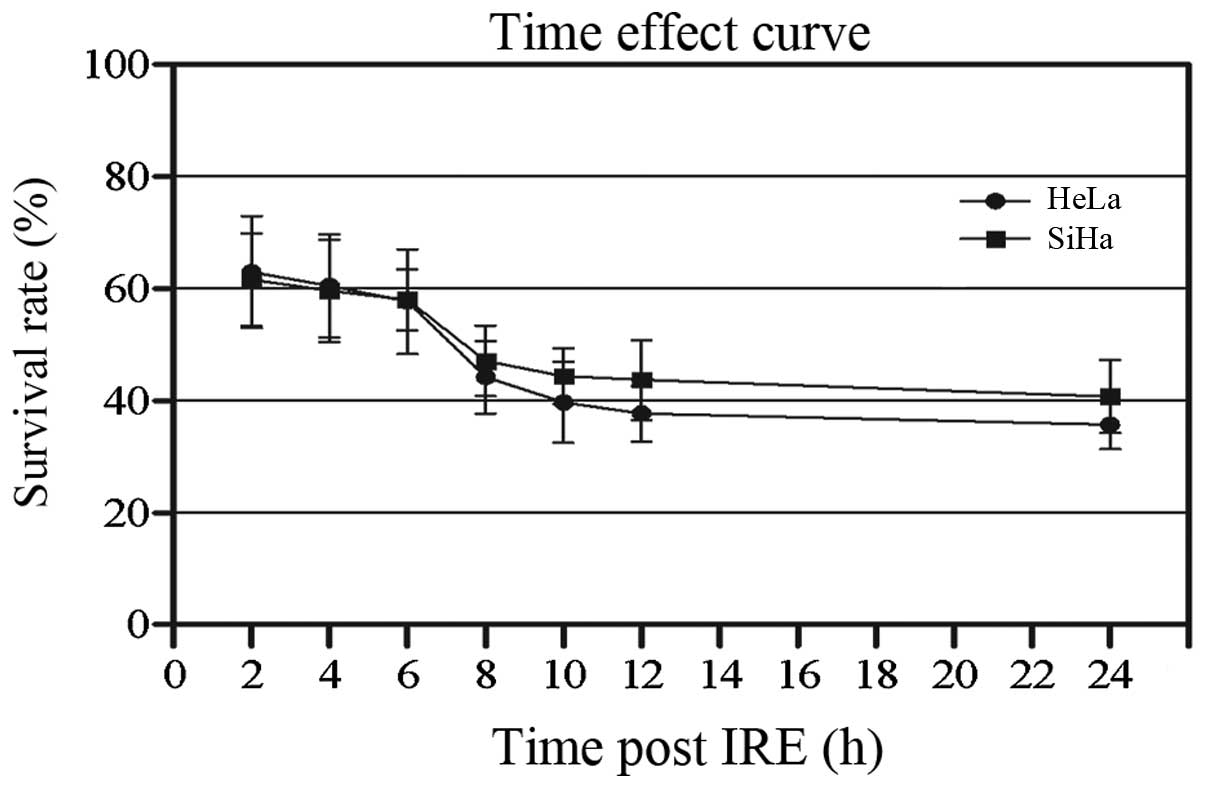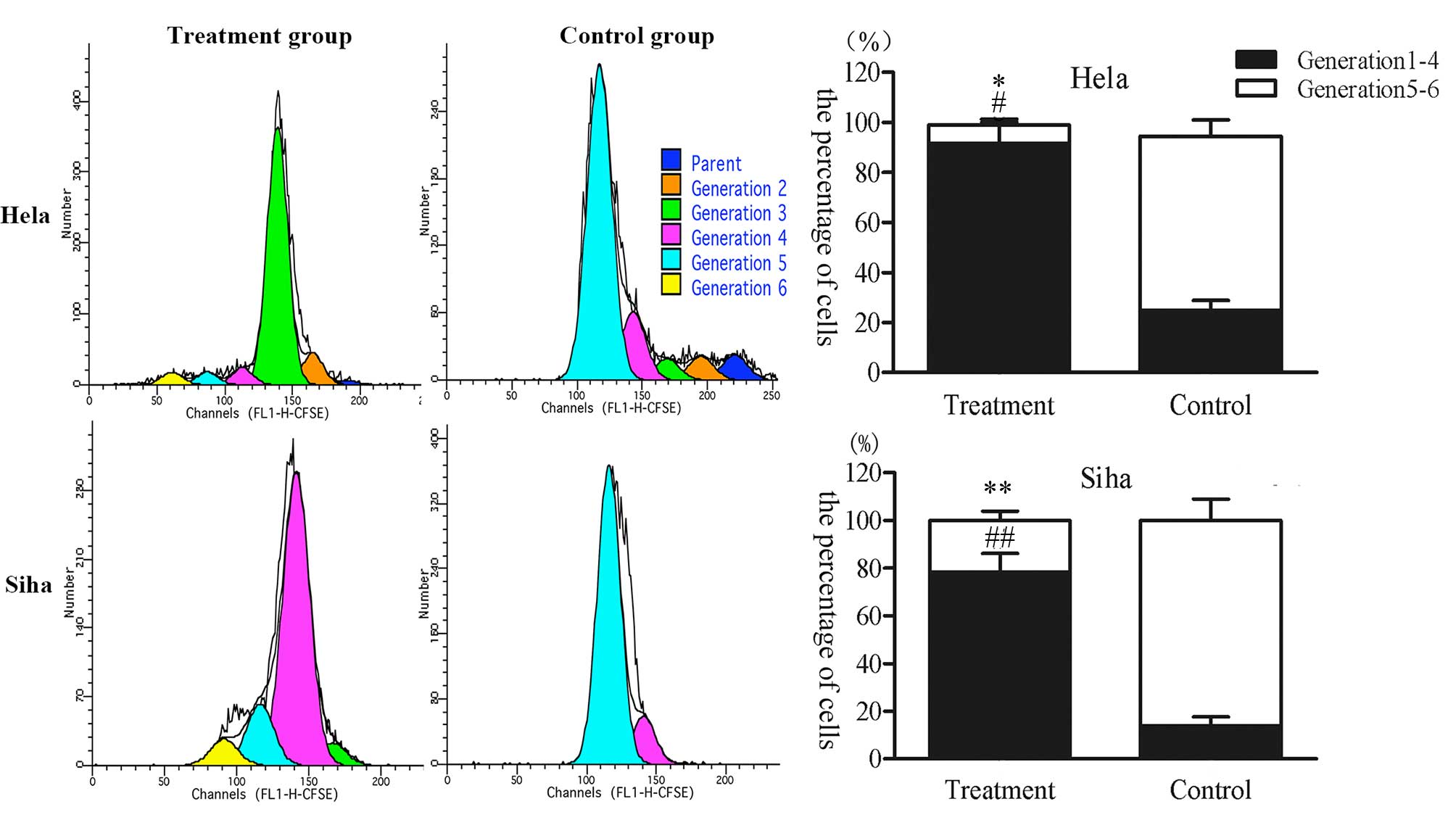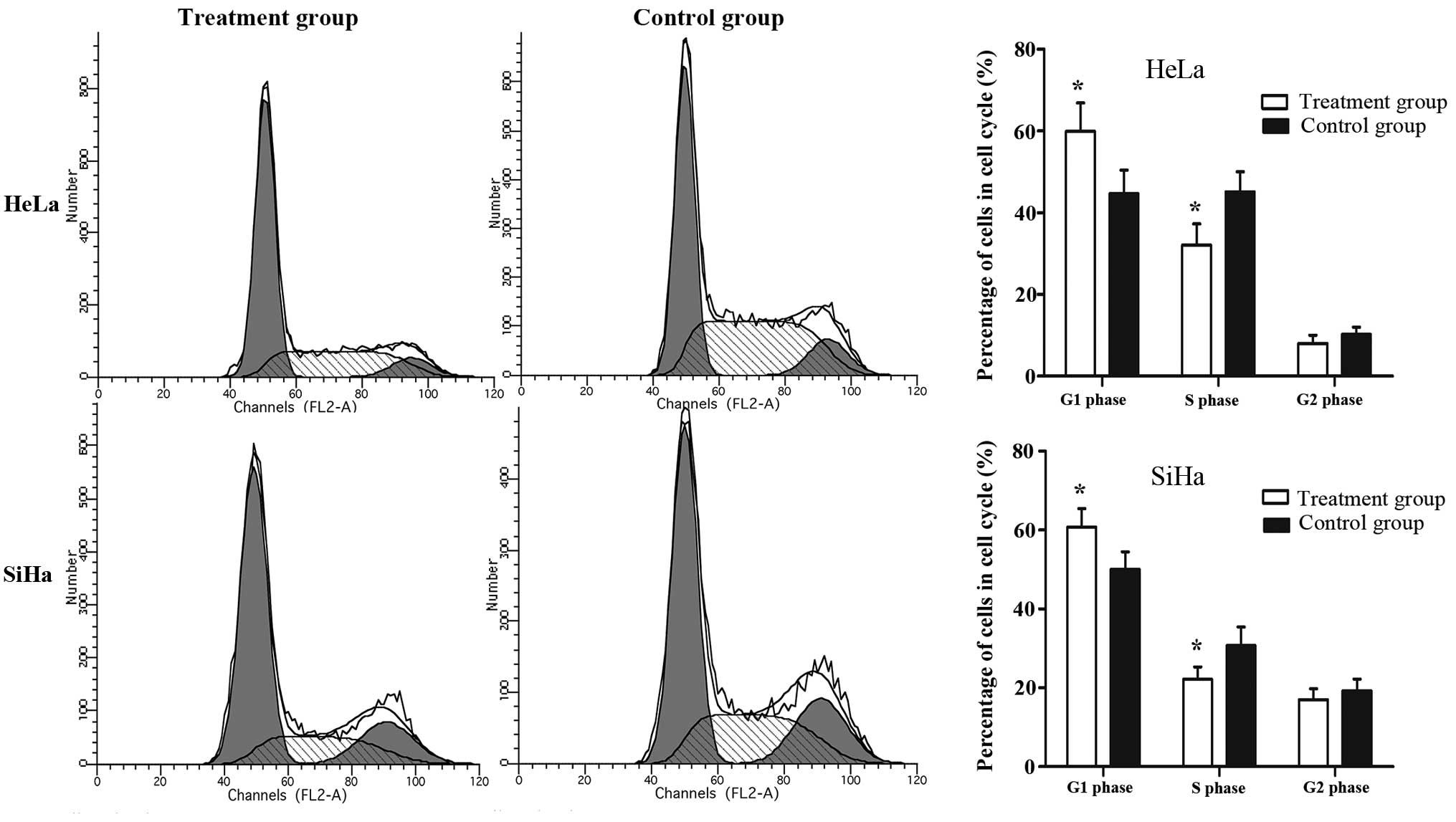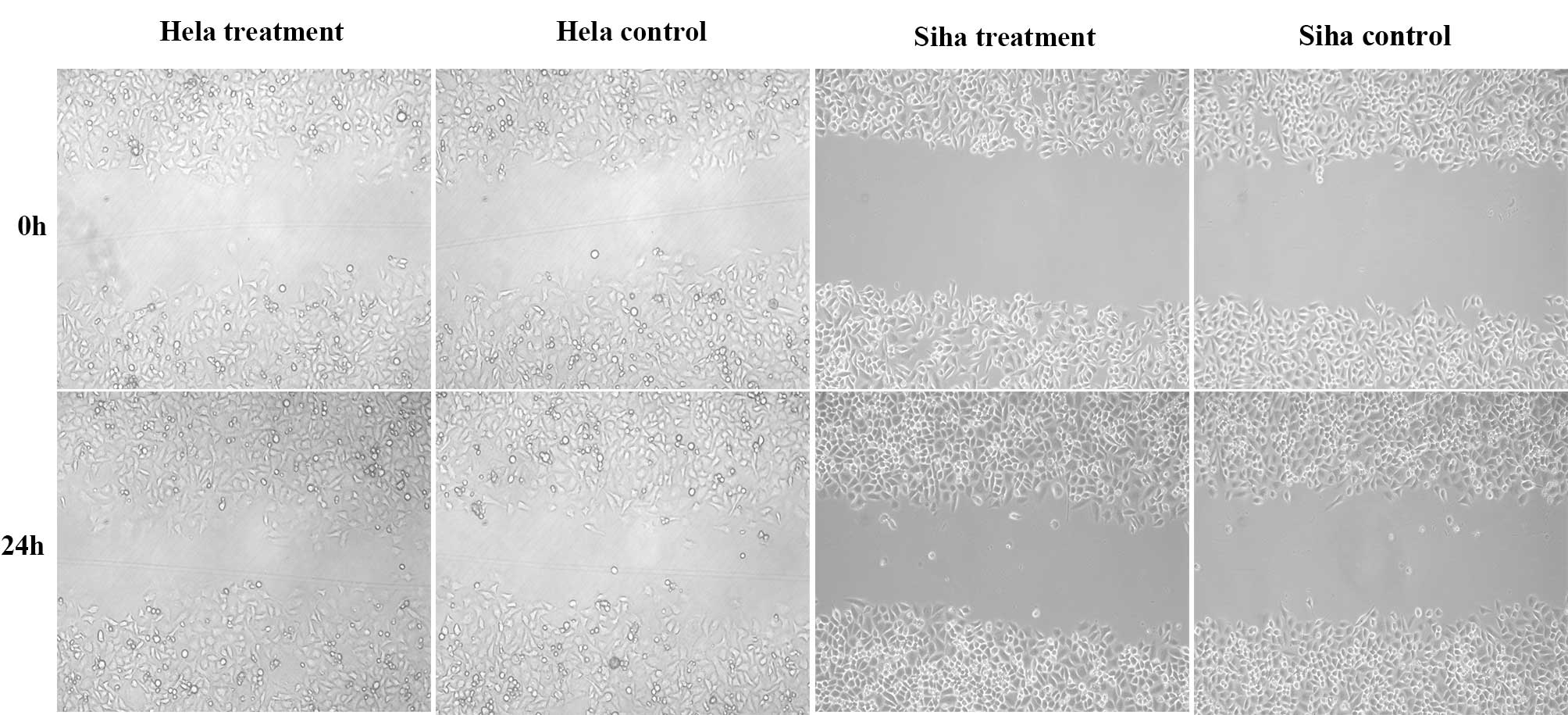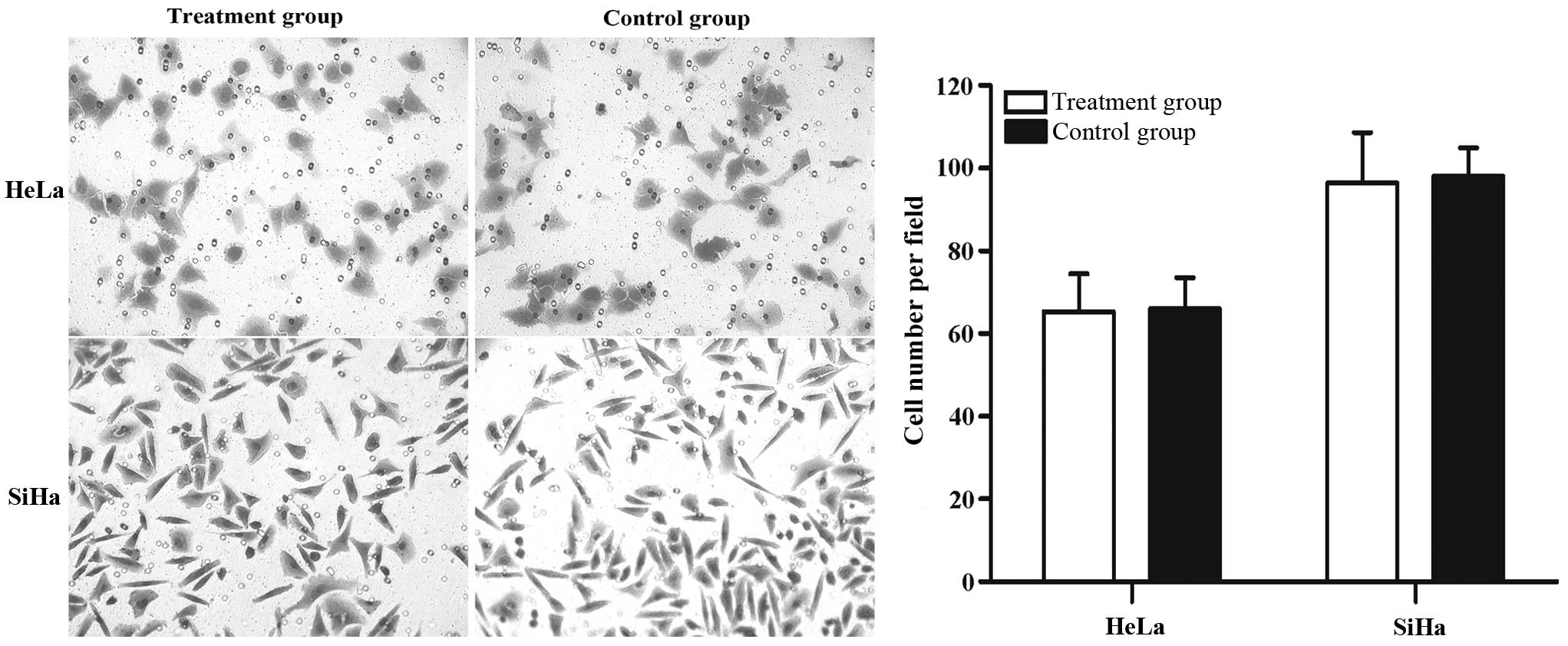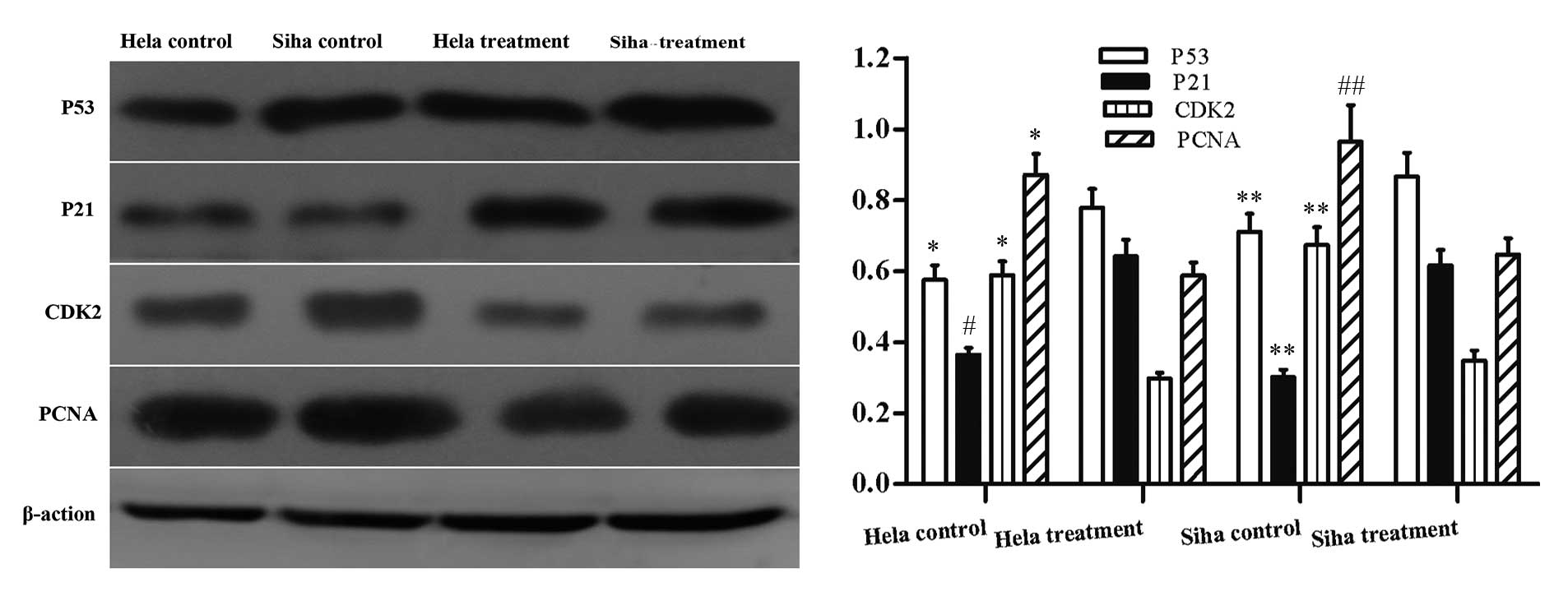Effects of irreversible electroporation on cervical cancer cell lines in vitro
- Authors:
- Published online on: July 5, 2016 https://doi.org/10.3892/mmr.2016.5468
- Pages: 2187-2193
Metrics: Total
Views: 0 (Spandidos Publications: | PMC Statistics: )
Total PDF Downloads: 0 (Spandidos Publications: | PMC Statistics: )
Abstract
The effects of irreversible electroporation (IRE) on the proliferation, migration, invasion and adhesion of human cervical cancer cell lines HeLa and SiHa were investigated in the present study. HeLa and SiHa cells were divided into a treatment group and control group. The treatment group cells were exposed to electric pulses at 16 pulses, 1 Hz frequency for 100 µsec with 1,000 V/cm strength. Cellular proliferation was determined 24 h after treatment using a Cell Counting Kit‑8 (CCK‑8) assay and carboxyfluorescein diacetate‑succinimidyl ester (CFDA‑SE) labeling assay. The different phases of the cell cycle were detected using flow cytometry. Wound healing, Transwell invasion and Matrigel adhesion assays were performed to evaluate the migration, invasion and adhesion abilities of HeLa and SiHa cells. The expression levels of metastasis‑associated proteins were determined by western blot analysis. CCK‑8 and CFSE labeling assays indicated that the inhibition of cellular proliferation occurs in cells treated with IRE. Additionally, cell cycle progression was arrested at the G1/S phase. A western blot analysis indicated that the expression levels of p53 and p21 proteins were increased, whilst those of cyclin‑dependent kinase 2 (CDK2) and proliferating cell nuclear antigen (PCNA) proteins were decreased. However, wound healing, invasion and adhesion assays indicated that cellular migration, invasion and adhesion abilities were not significantly altered following exposure to IRE. IRE was not observed to promote the migration, invasion or adhesion capacity of HeLa and SiHa cells. However, IRE may inhibit the capacity of cells to proliferate and their progression through the cell cycle in vitro. Preliminary evidence suggests that the underlying mechanism involves increased expression levels of p53 and p21 and decreased expression levels of CDK2 and PCNA.




